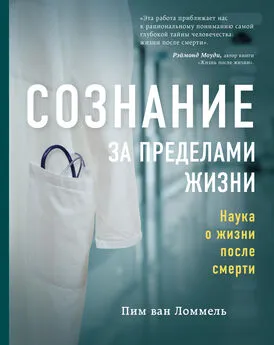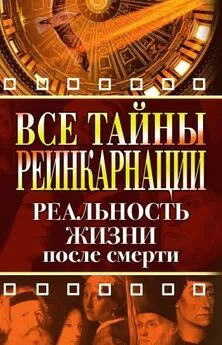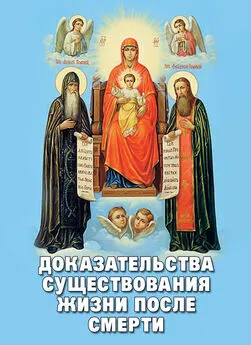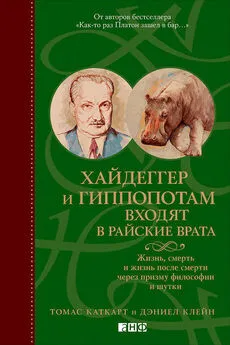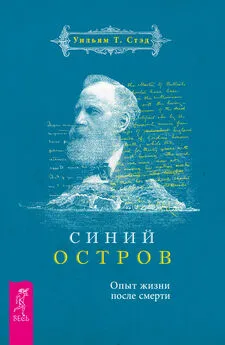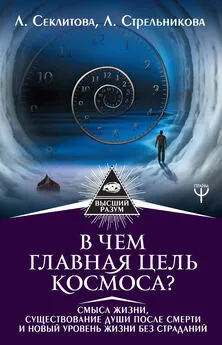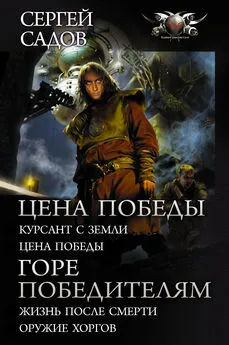Пим Ломмель - Сознание за пределами жизни. Наука о жизни после смерти
- Название:Сознание за пределами жизни. Наука о жизни после смерти
- Автор:
- Жанр:
- Издательство:Эксмо
- Год:2021
- Город:Москва
- ISBN:978-5-04-154586-4
- Рейтинг:
- Избранное:Добавить в избранное
-
Отзывы:
-
Ваша оценка:
Пим Ломмель - Сознание за пределами жизни. Наука о жизни после смерти краткое содержание
В формате PDF A4 сохранен издательский макет.
Сознание за пределами жизни. Наука о жизни после смерти - читать онлайн бесплатно ознакомительный отрывок
Интервал:
Закладка:
5. B. Greyson, “The Incidence of Near-Death Experiences,” Medicine and Psychiatry 1 (1998): 92–99; P. van Lommel et al., “Near-Death Experiences in Survivors of Cardiac Arrest: A Prospective Study in the Netherlands,” Lancet 358 (2001): 2039–2045; B. Greyson, “Incidence and Correlates of Near-Death-Experiences in a Cardiac Care Unit,” General Hospital Psychiatry 25 (2003): 269–276; S. Parnia et al., “A Qualitative and Quantitative Study of the Incidence, Features and Aetiology of Near-Death Experiences in Cardiac Arrest Survivors,” Resuscitation 48 (2001): 149–156.
6. Van Lommel et al., “Near-Death Experiences.”
7. Статистику по детям см.: M. Morse and P. Perry, Closer to the Light (New York: Villard Books, 1990). Исследование Ринга – K. Ring, Life at Death: A Scientific Investigation of the Near-Death Experience (New York: Coward, McCann & Geoghegan, 1980). Об исследовании Сабома говорится в кн.: M. B. Sabom, Recollections of Death: A Medical Investigation (New York: Harper & Row, 1982). О проспективных исследованиях с участием пациентов-сердечников см. Greyson, “Incidence of Near-Death”; также см. исследование Грейсона от 2003 года: Greyson, “Incidence and Correlates.” Нидерландское исследование – Van Lommel et al., “Near-Death Experiences.”
8. H. Yamamura, “Implication of Near-Death Experience for the Elderly in Terminal Care,” Nippon Ronen Igakkai Zasshi 35, no. 2 (1998): 103–115.
9. Sabom, Recollections of Death ; Van Lommel et al., “Near-Death Experiences.”
10. G. M. Woerlee, Mortal Minds: A Biology of the Soul and the Dying Experience (Utrecht, the Netherlands: De Tijdstroom, 2003); B. Greyson, “Near-Death Experiences,” in Varieties of Anomalous Experiences: Examining the Scientific Evidence , ed. E. Cardena, S. J. Lynn, and S. Krippner (Washington, DC: American Psychological Association, 2000), 315–352.
11. B. Greyson, “Biological Aspects of Near-Death Experiences,” Perspectives in Biology and Medicine 42, no. 1 (1998): 14–32; E. D. Kelly and E. W. Kelly, “Unusual Experiences Near Death and Related Phenomena,” в кн.: Irreducible Mind: Toward a Psychology for the 21 st Century , 367–421 (Lanham: Rowman & Littlefield Publishers, 2007).
12. Woerlee, Mortal Minds ; S. Blackmore, Dying to Live: Science and the Near-Death Experience (London: HarperCollins, 1993).
13. Blackmore, Dying to Live ; Woerlee, Mortal Minds .
14. J. E. Whinnery and A. M. Whinnery, “Acceleration-Induced Loss of Consciousness,” Archives of Neurology 47 (1990): 764–76.
15. T. Lempert, M. Bauer, and D. Schmidt, “Syncope and Near-Death Experience,” Lancet 344 (1994): 829–830.
16. L. T. Meduna, Carbon Dioxide Therapy: A Neuropsychological Treatment of Nervous Disorders (Springfield: Charles C. Thomas, 1950).
17. Parnia et al., “Cardiac Arrest Survivors”; Ring, Life at Death ; Greyson, “Near-Death Experiences”; P. Sartori, “The Incidence and Phenomenology of Near-Death Experiences,” Network Review (Scientific and Medical Network) 90 (2006): 23–25.
18. Z. Klemenc-Ketis, Kersnik, J., Gremc, S. (2010), The effect of carbon dioxide on near-death experiences in out-of-hospital arrest survivors: a prospective observational study. Critical Care, 14: R56.
19. L. Mevius, Kievits, F. (2010), Hypercapnie verklaart bijna-doodervaringen. Ned. Tijdschr. Geneeskd. 154: C547.
20. A. B. Sanders, Kern, K. B., Otto, C. W., Milander, M. M., Ewy, G. A. (1989), End-Tidal Carbon Dioxide Monitoring During Cardiopulmonary Resuscitation. A Prognostic Indicator for Survival JAMA ; 262 (10): 1347–1351.
21. M. Kolar, Krizmaric, M., Klemen, P., Grmec, S. (2008), Partial pressure of end-tidal carbon dioxide successful predicts cardiopulmonary resuscitation in the field: a prospective observational study. Critical Care , 12: R115.
22. K. Jansen, “Neuroscience, Ketamine and the Near-Death Experience: The Role of Glutamate and the NMDA-Receptor,” in The Near-Death Experience: A Reader, ed. L. W. Bailey and J. Yates (New York and London: Routledge, 1996), 265–282.
23. R. Strassman, DMT, The Spirit Molecule: A Doctor’s Revolutionary Research into the Biology of Near-Death and Mystical Experiences (Rochester, VT: Park Street Press, 2001).
24. Strassman, DMT .
25. A. Newberg, Why God Won’t Go Away: Brain Science and the Biology of Belief (New York: Ballantine Books, 2002).
26. По ДМТ см.: R. Strassman, DMT ; по ЛСД см.: S. Grof and J. Halifax, The Human Encounter with Death (New York: Dutton, 1977).
27. E. Rodin, “Comments on ‘A Neurobiological Model for Near-Death Experiences,’” Journal of Near-Death Studies 7 (1989): 255–59.
28. W. Penfield, The Excitable Cortex in Conscious Man (Liverpool: Liverpool University Press, 1958); W. Penfield, The Mystery of the Mind (Princeton: Princeton University Press, 1975); W. Penfield, “The Role of the Temporal Cortex in Certain Psychical Phenomena,” Journal of Mental Science 101 (1955): 451–465.
29. O. Blanke et al., “Stimulating Illusory Own-Body Perceptions: The Part of the Brain That Can Induce Out-of-Body Experiences Has Been Located,” Nature 419 (2002): 269–270; O. Blanke et al., “Out-of-Body Experience and Autoscopy of Neurological Origin,” Brain 127 (2004): 243–258.
30. M. A. Persinger, “Near-Death Experiences: Determining the Neuroanatomical Pathways by Experiential Patterns and Simulation in Experimental Settings,” in Healing: Beyond Suffering or Death , ed. L. Bessette (Chabanel, Québec, Canada: Publications MNH, 1994), 277–286; M. A. Persinger and F. Healey, “Experimental Facilitation of the Sensed Presence: Possible Intercalatation Between the Hemispheres Induced by Complex Magnetic Fields,” Journal of Nervous and Mental Diseases 190 (2002): 533–541; P. Granqvist et al., “Sensed Presence and Mystical Experiences Are Predicted by Suggestibility, Not by the Application of Weak Complex Transcranial Magnetic Fields,” Neuroscience Letters 379 (2005): 1–6.
31. W. B. Britton and R. R. Bootzin, “Near-Death Experiences and the Temporal Lobe,” American Psychological Society 15, no. 4 (2004): 254–258.
32. K. R. Nelson et al., “Does the Arousal System Contribute to Near Death Experience?” Neurology 66, no. 1 (2006): 1003–1009.
33. J. Long and J. M. Holden, “Does the Arousal System Contribute to Near-Death and Out-of-Body Experiences? A Summary and Response,” Journal of Near-Death Studies 25, no. 3 (2007): 135–169.
34. Статья 30-х годов ХХ века – O. Pfister, “Shockdenken und Shockphantasien bei höchster Todesgefahr,” Zeitschrift für Psychoanalyse 16 (1930): 430–455. Переведена: R. Noyes и R. Kletti, опубликована под названием: “Shock Thoughts and Fantasies in Extreme Mortal Danger.” Кросс-культурные сравнения, см.: A. Kellehear, Experiences Near Death: Beyond Medicine and Religion (New York and Oxford: Oxford University Press, 1996).
35. G. K. Athappilly, B. Greyson, and I. Stevenson, “Do Prevailing Society Models Influence Reports of Near-Death Experiences: A Comparison of Accounts Reported Before and After 1975,” Journal of Nervous and Mental Disease 194, no. 3 (2006): 218–233.
36. B. Greyson, “Dissociation in People Who Have Near-Death Experiences: Out of Their Bodies or Out of Their Minds?” Lancet 355 (2000): 460–63.
37. Woerlee, Mortal Minds ; Blackmore, Dying to Live .
38. Woerlee, Mortal Minds ; Blackmore, Dying to Live ; Sabom, Recollections of Death .
39. S. Parnia and P. Fenwick, “Near-Death Experiences in Cardiac Arrest: Visions of a Dying Brain or Visions of a New Science of Consciousness. Review Article,” Resuscitation 52 (2002): 5–11; E. W. Cook, B. Greyson, and I. Stevenson, “Do Any Near-Death Experiences Provide Evidence for the Survival of Human Personality After Death? Relevant Features and Illustrative Case Reports,” Journal of Scientific Exploration 12 (1998): 377–406; K. Ring and S. Cooper, Mindsight: Near-Death and Out-of-Body Experiences in the Blind (Palo Alto, CA: William James Center/Institute of Transpersonal Psychology, 1999).
40. Sabom, Recollections of Death .
41. M. M. Ghoneim and R. I. Block, “Learning and Memory During General Anaesthesia: An Update,” Anesthesiology 87 (1997): 387–410.
42. О пациентах под общим наркозом, см.: E. R. John et al., “Invariant Reversible QEEG Effects of Anesthetics,” Consciousness and Cognition 10 (2001): 165–183. Об исследованиях с применением фМРТ для пациентов в коме, см.: S. Laureys et al., “Brain Function in the Vegetative State,” в кн.: Advances in Experimental Medicine and Biology 550: Brain Death and Disorders of Consciousness , ed. C. Machado and D. A. Shewmon, 229–238 (New York: Kluwer/Plenum, 2004). См. также: Kelly and Kelly, Irreducible Mind , 367–421.
43. D. B. Cheek, “Unconscious Perception of Meaningful Sounds During Surgical Anaesthesia as Revealed Under Hypnosis,” American Journal of Clinical Hypnosis 1 (1959): 101–113.
44. Kelly and Kelly, Irreducible Mind .
45. Blackmore, Dying to Live .
46. Kelly and Kelly, Irreducible Mind .
47. B. Greyson, J. M. Holden, and J. P. Mounsey, “Failure to Elicit Near-Death Experiences in Induced Cardiac Arrest,” Journal of Near-Death Studies 25, no. 2 (2006): 85–98.
48. J. C. Saavedra-Aguilar and J. S. Gómez-Jeria, “A Neurobiological Model for Near-Death Experiences,” Journal of Near-Death Studies 7 (1989): 205–222.
1. Эти факты подтверждены в исследовании пациентов-сердечников, проведенном Шванингером и его коллегами: J. Schwaninger et al., “A Prospective Analysis of Near-Death Experiences in Cardiac Arrest Patients,” Journal of Near-Death Studies 20 (2002): 215–232. В их исследованиях ОСО у пациентов с остановкой сердца, сравнимых с нашим исследованием, участвовало 174 реанимированных пациента, из которых 119 человек (68 %) умерли. Из выживших 55 пациентов лишь 30 (17 %) удалось расспросить. У остальных 25 пациентов был диагностирован необратимый ущерб, нанесенный мозгу к моменту запланированного собеседования. Еще одно исследование провели Парниа, Фенвик и другие: S. Parnia et al., “A Qualitative and Quantitative Study of the Incidence, Features and Aetiology of Near Death Experience in Cardiac Arrest Survivors,” Resuscitation 48 (2001): 149–156. В это исследование были включены 220 пациентов с остановкой сердца, исследование имело продолжительность более года; из этих пациентов 62 % умерло и лишь 63 пациента (28 %) удалось расспросить.
Читать дальшеИнтервал:
Закладка:
